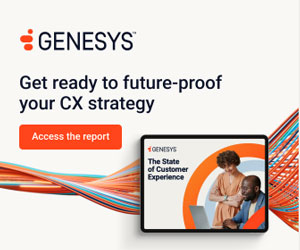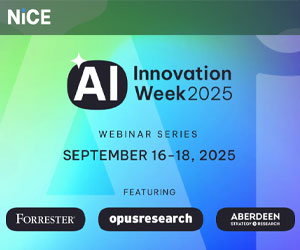Andrea Matsuda at NICE looks at connecting the data divide for optimized BPO partnerships.
A 42% attrition rate coupled with a competitive labor market and a shift to remote or hybrid work environments have spun up a perfect storm for contact centre hiring leaders.
It’s no wonder those leaders are increasingly turning to business process outsourcers (BPOs) as a solve for their staffing challenges.
It’s a solve that is reliable, price-fixed, and generally faster to initiate than the recruiting, interviewing, training, and onboarding of a new hire.
And it’s a solve that’s on the rise: the worldwide BPO market is projected to grow at a 9.1% compound annual growth rate (CAGR) between 2022 and 2030.
However, the BPO solve creates a new set of challenges in the form of data management. The delegation of business processes to a third-party partner complicates essential data exchange and management.
Data is the lifeblood of a next-generation workforce management (WFM) software, and as BPO partnerships grow in number and complexity, effective data exchange and integration is a critical enabler of success.
When it comes to successful BPO partnerships the devil is really in the details. Consider the value of access to the details found in each party’s WFM software and automatic call distributor (ACD) systems.
Now imagine how deeper data details, such as those found in financial planning, quality monitoring, and contact router solutions, could be integrated and activated to drive accuracy, cost savings, and workforce optimization.
Our WFM suite was built to enable successful BPO partnerships. And now, NICE SmartSync takes BPO management into the next generation by establishing a central hub to collect and exchange data from disparate systems and then mobilize the insights to deliver on your business objectives, automatically.
This utility automates data integration between all contact centre systems, dramatically reduces administrative tasks, ensures accuracy and compliance, and improves the customer, employee, and partner experience, simply by connecting and activating mission-critical data.
The system integrates the data you have with the data your BPO generates, and gives your in-house WFM team an enterprise view of your BPO’s WFM solution with the ability to:
- Empower faster, more accurate decision-making with accessible data and simultaneous systems updates.
- Automate and eliminate rote tasks. For example, leaders can export agents as well as non-agent users, defined in the WFM to human resources and automatic call distributor (ACD) systems.
- Reduce manual intervention involved in exporting calculated fields, such as adherence and schedule summary, that can be used for data exchange between systems.
- Streamline business processes by uploading high-volume or customized-frequency data to your WFM solution.
- Automate custom report creation either on-demand with the Custom Activities view or by setting the export and import to run at a scheduled time in the future.
Gartner predicts that in 2023, organizations that promote data sharing will outperform their peers on most business value metrics.
Yet, Gartner goes on to report that through 2022, less than 5% of data-sharing programs will correctly identify trusted data and locate trusted data sources.
It is custom built to not just identify and locate trusted data sources, but to integrate and activate them against your enterprise and service-level agreement objectives.
The BPO partnership environment is far too complex for manual data integration management.
This blog post has been re-published by kind permission of NiCE – View the Original Article
For more information about NiCE - visit the NiCE Website
Call Centre Helper is not responsible for the content of these guest blog posts. The opinions expressed in this article are those of the author, and do not necessarily reflect those of Call Centre Helper.
Author: NiCE
Published On: 16th Feb 2023 - Last modified: 6th Sep 2024
Read more about - Guest Blogs, Andrea Matsuda, NiCE






 NiCE (NASDAQ: NICE) is transforming the world with AI that puts people first. Our purpose-built AI-powered platforms automate engagements into proactive, safe, intelligent actions, empowering individuals and organizations to innovate and act, from interaction to resolution. Trusted by organizations throughout 150+ countries worldwide, NiCE’s platforms are widely adopted across industries connecting people, systems, and workflows to work smarter at scale, elevating performance across the organization, delivering proven measurable outcomes.
NiCE (NASDAQ: NICE) is transforming the world with AI that puts people first. Our purpose-built AI-powered platforms automate engagements into proactive, safe, intelligent actions, empowering individuals and organizations to innovate and act, from interaction to resolution. Trusted by organizations throughout 150+ countries worldwide, NiCE’s platforms are widely adopted across industries connecting people, systems, and workflows to work smarter at scale, elevating performance across the organization, delivering proven measurable outcomes. 
































